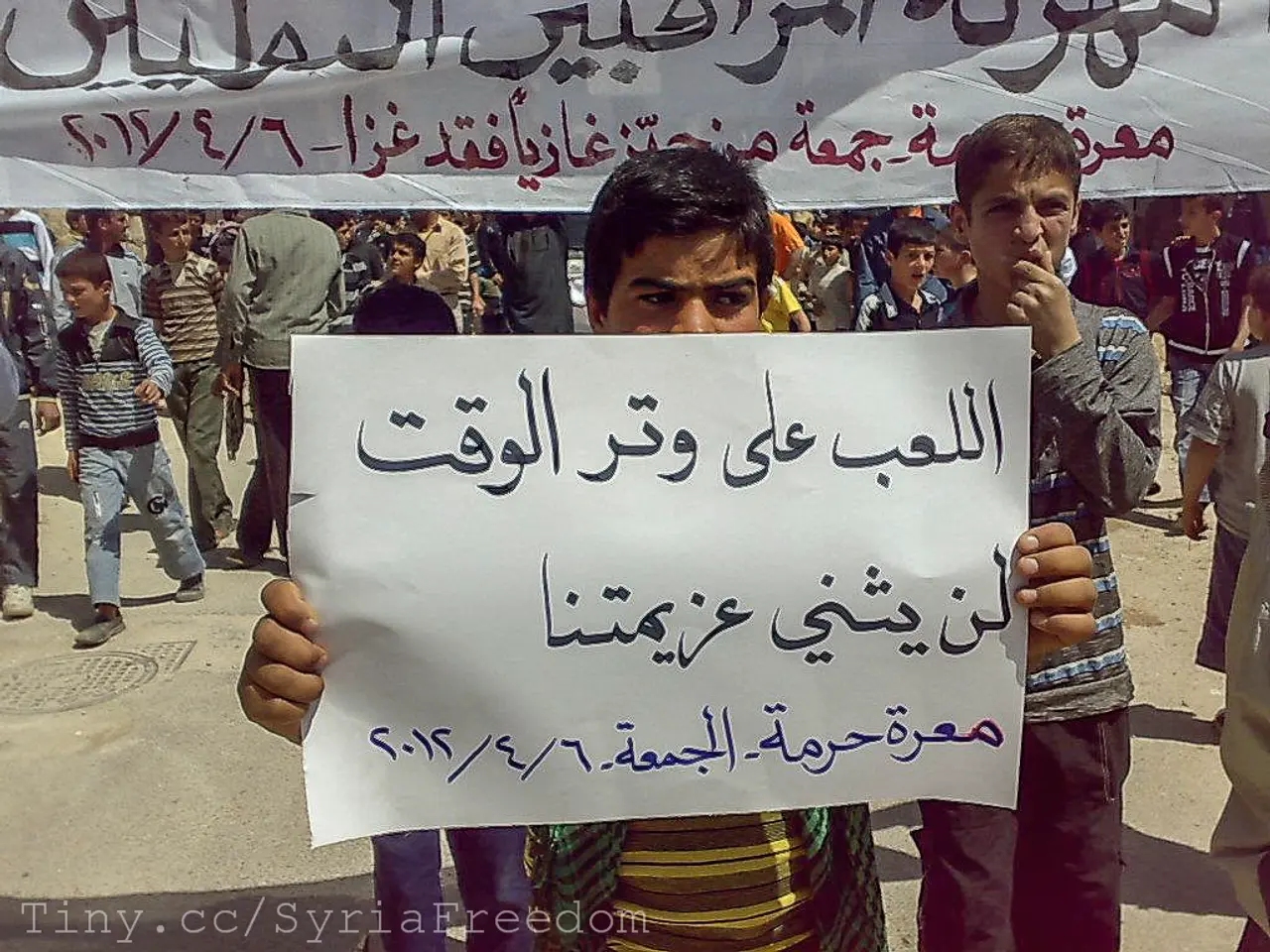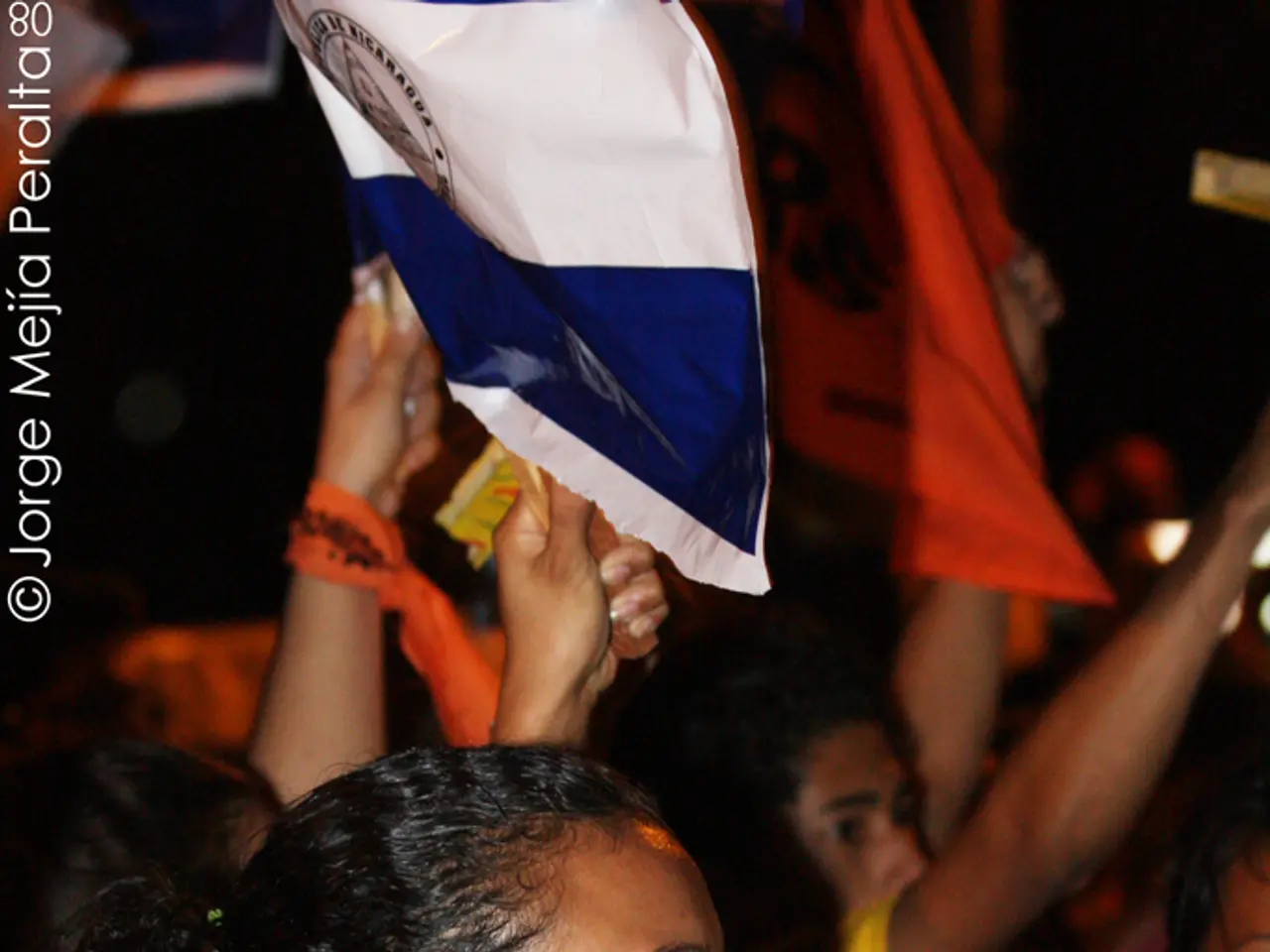Humanitarian entities advocate for discontinuation of Israeli-supported aid model within Gaza territory
The ongoing humanitarian crisis in Gaza has been marked by significant controversy and violence surrounding the aid distribution system. Here are key points that highlight the challenges:
## Violence at Distribution Sites
More than 30 Palestinians have been killed by alleged Israeli gunfire while attempting to reach aid distribution centers in Gaza. The Israeli military has claimed that these incidents involved "warning shots" aimed at people posing a threat, but videos of the shootings are under review.[1]
## International Criticism
The aid distribution system, which was imposed by Israel after it partially lifted a blockade, has been criticized by international aid organizations. These organizations have refused to participate, stating that the system is not impartial, neutral, or independent.[1]
## Blockade and Humanitarian Crisis
The blockade, which was in place for two and a half months, led to widespread malnutrition and conditions similar to famine. The new distribution system has been unable to meet the needs of the civilian population, with insufficient aid and calories being distributed.[1]
## Lack of Transparency
Israel's refusal to allow international journalists into Gaza has been criticized for helping Hamas avoid transparency and accountability. This restriction has also hindered the ability of international organizations to assess the situation accurately.[1]
## Humanitarian Toll
Since October 7, 2023, over 55,400 people have been killed in Gaza, and more than 128,900 have been injured according to local health officials. The conflict began with a surprise Hamas attack on Israel that resulted in the deaths of nearly 1,200 Israelis and the capture of 251 others, with 53 still being held by Hamas.[1]
The Gaza Humanitarian Foundation (GHF), a privately-run organization that took over aid distribution in Gaza from a network led by the United Nations, with the support of the U.S. and Israel, has been at the centre of these controversies. The GHF's distribution centers are located close to Israeli military positions, a factor that has been raised as a concern by international charities and humanitarian groups.
The GHF has delivered over 52 million meals as of July 1, but it has also been accused of chaos and deadly violence against Palestinians seeking food at its sites. The GHF has denied these allegations, stating that there has been no violence in or around its centers and that its personnel have not opened fire. Last month, the GHF called for Israel's military to investigate allegations from Gaza's Health Ministry that more than 500 Palestinians have been killed at or near its distribution centers over the past month.
The new aid system limits food distribution to a small number of hubs guarded by armed contractors. This has led to Palestinians often having to travel long distances to reach the GHF's distribution centers, a situation that has been criticized for exacerbating the humanitarian crisis. The situation underscores the complex and volatile nature of the aid distribution system in Gaza, with significant humanitarian challenges and political tensions.
[1] Source: Reuters, Associated Press, and Al Jazeera news reports.
In the context of the ongoing humanitarian crisis in Gaza, the Gaza Humanitarian Foundation (GHF) has been embroiled in controversies regarding the distribution of aid, with allegations of chaos and deadly violence at GHF distribution sites. This situation, compounded by the new aid system's limitations and the travel distances Palestinians must endure to access food, has been critically analyzed under general news, politics, war-and-conflicts, and crime-and-justice sector. Meanwhile, international charities and humanitarian groups have raised concerns about the GHF's distribution centers' proximity to Israeli military positions, leading to ongoing debates about the system's impartiality and independence.








